Entheos Academy – How to Refine Your Life (or Change it Completely) with Pilar Gerasimo
$47.00
Product Include:[WebRip – 1 MP4]
File size:584.48 MB
Entheos Academy – How to Refine Your Life (or Change it Completely) with Pilar Gerasimo
**More information:
Get Entheos Academy – How to Refine Your Life (or Change it Completely) with Pilar Gerasimo at Salaedu.com
Description
Entheos Academy – How to Refine Your Life (or Change it Completely) with Pilar Gerasimo [WebRip – 1 MP4]
Pilar Gerasimo is the founding editor of Experience Life, a healthy-living magazine that reaches nearly 3 million people nationwide.
How to Refine Your Life (or Change it Completely)
This class presents a proven process and a set of powerful skills to help you create positive change in any area of your life, from health and fitness to career, finance, relationships and more. The objective: To empower you to achieve greater personal clarity, focus, momentum and satisfaction. To help you live a life that brings out the best in you — so you can share your best with others.
During the class, you’ll be introduced to worksheets, personal-exploration exercises and reading assignments you can complete outside class, if you choose. The more of this coursework you do, the more you will get out of the experience.
The focus of this hour-long class will be to provide an overview of how personal change works (and doesn’t), and to give you a sense of some of the tools and perspectives you can use in your own life-changing endeavors.
Here are the “Top 10 Big Ideas” we’ll invite you to consider …The Top 10 Big Ideas
1
Change is a Process, Not an EventChange proceeds through a cycle of assessment, commitment, feedback and follow-through. If you get stuck, all you need to do is notice where you are in the cycle, then take one step forward toward whatever comes next.
The exercises in this class will give you opportunities to take action. Except where other links are provided, you will find all exercises in the “Refine Your Life” workbook.
2
Start Where You AreBefore you decide where you want to go, it helps to know where you currently stand.
How’s life? Are you doing just dandy? Ho hum? A little lost? In crisis? Has there been some a triggering catalyst that’s got you feeling primed to create change? Some inspiration? Where is the desire coming from? How strongly are you feeling it? What’s your readiness to change?If you’re taking this class, you are likely either thinking about changing, taking some initial preparatory steps, or are you already in the midst of action. Or maybe you started taking action and then had a setback or lost steam.
Knowing where you are now will help you determine which steps are most appropriate for you to take at this time, and which aspects of this course will serve you best.
Assigned Reading: “Stages of Change”3Assess Your LifeWe usually know when an area of our life is going great, and when an area is totally out of whack. But sometimes we’ve been ignoring one realm of our life for so long, we hardly notice that it’s gone off the rails.
Doing a quick life assessment can help you get the big-picture lay of the land. First, evaluate your current levels of satisfaction by giving yourself a score from 1 (low) to 10 (high) in eight key domains: Health and fitness Romantic relationship/partnership Finances Career (or primary project) Creativity, personal growth and expression Family and close-friends Community/group participation Spirituality/sense of meaning/higher purposeNext, review and consider your scores:Areas you rank low are places where you are may be leaking life energy and/or lacking life skills — these are areas of opportunity for growth and discovery. They are “bummers with a purpose.”
Pay attention: What’s mucking you up in each of these areas? Is the same dynamic mucking you up in multiple places? What is your life inviting you to learn?Areas you rank high may be areas of natural strength, resiliency or accomplishment — resources you can learn from or draw on in turning around areas of challenge.
Pay attention: How did you get strong in these areas? What natural skills or developed strengths are you leveraging? How could you apply them or leverage their benefits to create change momentum in your weaker areas?TIP: Plan to repeat this life assessment on a regular basis — annually at least, but ideally quarterly, or even monthly. You may be surprised to see how rapidly it changes in response to your focused intention and action.
Exercise: Life WheelFor greater insight, transfer your scores from the exercise above to a Life Wheel. Find that worksheet in the “Refine Your Life” workbook and notice the relationships between various areas. Post or file your Life Wheel where you will see it on a regular basis.
4
Pace YourselfCreating change requires significant attention, energy and resources. It can churn up new discoveries and it can also turn up new challenges and demands. So you want to be thoughtful in how you go about your life-shifting efforts.
Taking on too much all at once (or more than you have capacity for at any given time) generally backfires. It diminishes your self-control, and leaves you feeling frustrated and demotivated.
For that reason, while you are learning this process, it’s wise to pick one area at a time to focus on. Place the others on a “waiting list.”Consider: How much available energy and motivation do you currently have for creating positive change in your life? What is your level of readiness? What is your level of urgency?As you begin making incremental progress in your area of choice, you’ll find that other areas naturally come along for the ride. You’ll also find that you have more energy and enthusiasm to pursue change.
Over time, you’ll automatically begin applying what you learn in one focus area to all your other realms of your experience. Plus, the rewards from the areas you are successfully changing will influence other areas positively without your “trying” to do anything.
5
Connect With Your ValuesWhen we are living in alignment with our values, we tend to feel alive, present, engaged, peaceful and fulfilled — even during times of challenge.
When we are living out of alignment with our values (or trying to comply with somebody else’s value set), we tend to feel stressed, frustrated, “pulled apart,” helpless, desperate, numb, stuck or lacking in motivation — even during times of success.
Values are internal or “intrinsic” motivators. They form the bedrock or foundation of our most meaningful successes and usually present in our most important peak moments.
Values define the essential aspects of our character. They express our true, best selves. They help to clarify where to invest our time and energy and where we’ll get our best rewards. They contain clues about our life purpose.
Focusing on and engaging our values can give us strength and help us choose our best course of action at any given time. A deep awareness of them can be very helpful in helping us achieve our personal goals.
There are no right or wrong values. Values are different than morals or beliefs. Values can evolve over time and shift in response to significant life experiences.
Exercise: Values Exploration To get started on clarifying the values that are most important to you at this time in your life, consider the following questions: What moments/achievements in your life have caused you to feel most present, alive, engaged, clear or proud? What values did these moments represent? What values were you acting on, expressing, witnessing or being touched by? What people in your life have you most admired, respected or been most positively influenced by? What values did these people represent? What values were you impressed or affected by in observing or interacting with them? What are some moments or experiences where you’ve felt deeply frustrated, offended, disgusted or disappointed? What values were being squeezed out, stepped on, or stepped over at these times?For more in-depth work, do the Values exercises in the “Refine Your Life” workbook.
6
Clarify Your VisionA vision is a picture of what you desire to create in the future. It’s a visualization of what you’d like to experience (in one part of your life, or all of it).A vision that is fueled by and a direct outgrowth of your values has immense power to motivate and guide you in the direction of your highest choices.
A vision is a picture of what you’d like to see happen. A vision does not necessarily specify how it is going to happen. That’s where goals and action plans come in.
When you work toward goals without a vision, it’s easy to lose track of the big picture, to veer off course, or to lose your sense of purpose. Under these circumstances, life can seem to “happen to you.”You can create a vision for a moment, a day, a decade or whatever you choose. Don’t worry if you can’t come up with a vision for your entire life. Just see as far ahead as you can or feel energized to, and focus on that horizon.
Many people find it helpful to create a vision for one to three years out, and then identify goals and action steps that will move them in that direction.
Exercise: Ideal Day Visualization You can access my guided meditation for creating (MP3) “Your Ideal Life” visualization here.
Exercise: Vision Board Find instructions for documenting your vision with a Vision Board in the “Refine Your Life” workbook.
7
Cultivate Some GoalsOnce you’ve decided where you want to go, you have to decide what you are able and willing to do to get there.Goals are the “commitment and action” phase of the change cycle. Working toward goals helps you accomplish things, and it also helps you discover a great deal about yourself — your priorities, patterns and so on.
A vision is a picture of what you’d like to see happen (e.g., a beautiful garden); goals and action planning describe how you can participate in making your vision a reality (planting and growing flowers).
Manifesting your vision for your ideal life may require you to fulfill multiple goals in various life areas (home, career, health, finances, etc.). Each major goal may call for the achievement of several smaller goals, each with its own detailed action plan.Initially, it’s best to work on one major goal at a time. As you gain confidence, skill and momentum, you may be able to handle several simultaneously.
Conventional wisdom says that successful goals are defined in S.M.A.R.T. terms: Specific (avoid “lose some weight,” “be happier” or “get out of debt” vagueness in favor of more precise language) Measurable (look for a way to express your goal numerically or as an observable “yes/no” “done/not done” result) Action-oriented (state, in positive terms, what you will personally DO to achieve the goal) Realistic (frame your goal in line with real-life limits of your available time, capacity, resources and motivation) Time-focused (express the goal in terms of how much time will you spend, when, over what period; note by when goal will be completed)Here are some questions to help you develop your goal along these lines:
1) How will I know when I have achieved my goal? What observable result or evidence will there be? How would someone else be able to confirm I’ve achieved it?
2) If I were making great progress toward my goal, what essential actions would I be taking or doing differently to achieve that?
3) How much time and energy can I realistically invest, and am I willing to devote, toward taking some or all of those actions on a daily or weekly basis?
4) When are where will those actions place?
5) How long will I need to sustain those actions to achieve success?
Exercise: Goal Flower Complete a Goal Flower or otherwise document both a goal and an action plan for achieving it. You can get the worksheet, samples and instructions here.
Goal Flower Basics The goals that take us toward our vision are seeded by our desires and are fueled and nourished by our values. Goals are supported by an action plan. That plan may be composed of various tasks and tactics, including strategies for overcoming obstacles, setting boundaries and seeking necessary resources and support. As our goals are achieved, they flower into rewards consistent with our vision (along with some surprise rewards we might never have imagined!).
8
Work (and Adjust) Your Action PlanThe best way to make steady progress toward a defined goal is to develop (and follow) a well-designed action plan that supports it. The Goal Flower exercise above prompts you to create one, and to develop it over time.Action plans define known action steps and tasks, including the obtaining of necessary resources, skills and support, setting healthy boundaries and establishing workarounds for areas of challenge (we’ll talk more about obstacles shortly). You can flesh them out with new information and ideas as you go.
You can draw on your answers to the goal questions above to develop an initial action plan (what you’ll do when).
Additionally, consider: What preparatory steps will I need to take? What knowledge or skills will I need to develop? Whom can I ask for support or assistance? Do I need anybody else’s buy-in or cooperation? Are there any physical or fiscal resources I need to access? How can I access them or free them up? Are there any courageous conversations I need to have? Any new boundaries I need to set? Are there any obvious blockades I must remove? Are there any wise people or powerful support systems I can access? What are some measurable benchmarks of success that will tell me whether or not I am on track with my planned time frame? If I get off course, what will I do? What support will I seek, what consequence am I willing to accept)? When I succeed, how will I celebrate my success? Find more information and exercises in the “Refine Your Life” workbook.
9
Stomp ObstaclesAs you start to take action on your plan, you’ll inevitably run into challenges. Some of them will be internal obstacles (thoughts, feelings, belief systems), others will be external obstacles (people, resources or environments around you).
Obstacle stomping is fun!This is the messy and cool part of the process — the part of the journey where some of our richest learning is harvested. Remember the cycle of personal change: Assessment, Commitment, Feedback, Follow-Through.
One form of “feedback” is discovering where you tend to lose steam, where you under-or over-estimate, where you are easily blindsided or distracted, where you avoid conflict or cave to pressure, where you self-sabotage or wander off course. These are rich veins of self-discovery that give you opportunities to “follow-through” by adjusting either your plan or your willingness to change.
The American Zen teacher Cheri Huber writes: “How you do anything is how you do everything.”Translation: Our strengths and weaknesses transfer across many areas of our lives. The tendencies that are showing up in one area are probably also showing up in other areas. Our limitations are creating “bummers for a purpose” all over our lives, and when we notice and deal with those limitations, our whole lives change for the better.
So celebrate what you learn, make adjustments as necessary, and then follow through. Keep developing your Goal Flower and action plan, working in new elements and obstacle-stomping strategies as needed. Remember, as long as you stay open, and stay committed to the cycle of personal change, you win!Some of the obstacle areas you might want to explore (I talk more about these in my 4-week course and there are whole books written on them): Internal and external resistance Belief systems and patterned behaviors Automatic reactions vs. conscious responses Boundaries, resources and supportsHowever you proceed in evolving your goals, strive to adopt a perspective of compassionate curiosity — a perspective of learning vs. judging. If you find yourself feeling confused, frustrated or stuck, do your best to notice and “sit with” your feelings vs. reacting to them right away. Ask yourself what your best options and choices are now. Go in search of the new skills and support systems you need. Do the things you can do, and celebrate your progress as you go.
Exercise: Start Seeing Obstacles
Use your journal to step through this series of questions for each significant obstacle (internal or external) that you anticipate or encounter:My goal is: Known or suspected obstacle (internal or external): Strategies to address obstacle (including strengths and support systems you can leverage, new skills you can develop): Two action steps I can take this week to transform this obstacle:1. _______________ By when:2. _______________By when:Exercise: Choice MapReview any obstacles you have encountered in the context of the Inquiry Institute’s Choice Map tool. Notice how shifting your questions about your current situation can change your sense of frustration and doubt toward a sense of opportunity and willingness. Find more in-depth counsel on overcoming obstacles, see the “Refine Your Life” workbook.
10
Notice Progress and Celebrate SuccessCreating conscious life change is honorable, challenging, sacred work. You deserve credit for taking it on. You deserve a big pat on the back for each insight, each effort, each small step forward you make.
Not into patting yourself on the back for small wins or incremental progress? Perhaps you should reconsider. Because taking stock of your small successes builds momentum. Momentum that will make you more successful.As we hone our strengths and build our confidence through small wins, we become significantly more competent and motivated to take on bigger ones. We build what’s known as “self-efficacy” — the belief that we can do whatever we set out to do.
Take some time (perhaps weekly) to reflect on each phase of your experience as you pursue the suggestions described in this the course, and if you like, share some of your insights with a friend or conversation partner. Ask: What have I discovered about myself, or gotten clearer about? What are some core values I’ve identified? Can I describe an aspect of my vision? What is one goal I am committed to achieving? What primary obstacle must I overcome? What skills or support systems will I need to do that? What are some of my best strengths? How can I leverage these strengths toward my goal? What progress have I made over the past few days? What small victories have I created for myself? How will I take what I’ve learned home with me?Exercise: “Signs of Progress” articleBy completing the work this class involves, you will have surpassed the personal work done by the vast majority of the general population.
That’s one success you can begin celebrating now. So congratulations, and enjoy your continued journey!”
More Courses:Self – Help
Outstading Courses:https://tradersoffer.forex/product/celtic-shamanism-by-jane-burns/
Be the first to review “Entheos Academy – How to Refine Your Life (or Change it Completely) with Pilar Gerasimo” Cancel reply
Related products
Internet Marketing Courses
Internet Marketing Courses
Internet Marketing Courses





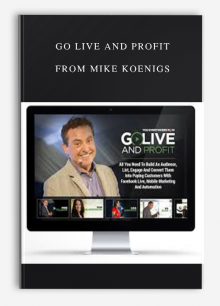

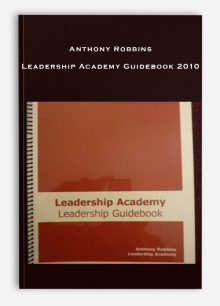
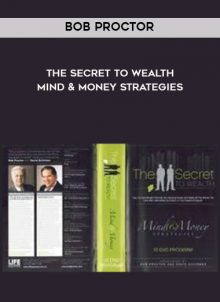
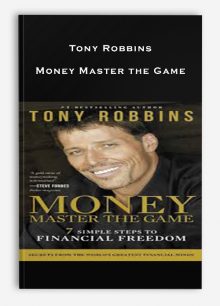
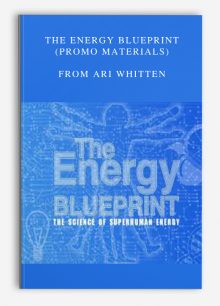
Reviews
There are no reviews yet.